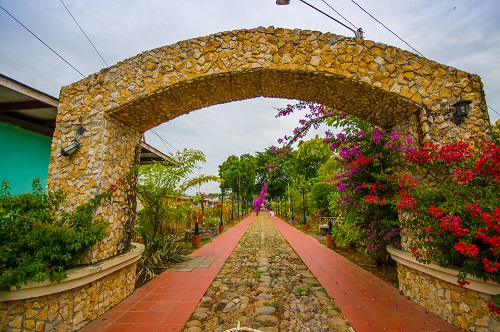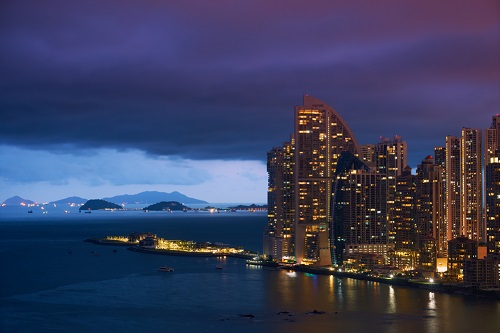If you are living and working in Panama, you may be wondering what kind of healthcare you can expect to receive. This will depend to some extent on whether you choose to use the public or the private healthcare sector. We will look at all aspects of the Panamanian healthcare system below and consider some of your options.
Public healthcare in Panama
Panama is a relatively small country, and the quality of medical care there varies between urban centres, such as Panama City and David, and the more rural areas. You should have no difficulty in accessing a high standard of healthcare in the cities, but you may experience a lower standard of provision in rural parts of the country. Waiting times can be lengthy, for instance, and there may be a shortage of medical personnel.
Panama has a two-tier health insurance system, divided between a form of national insurance and the private sector. The public sector is funded by the Ministerio de Salud (MINSA) and the Social Security Fund (Caja de Seguro Social/CSS), using contributions from employers and employees. These operate separate facilities, and the Caja de Seguro Social also runs a pension fund.
Despite this national scheme, there is a big healthcare gap between the wealthy parts of Panama and the remote, poor, rural regions, as mentioned above. The maternal mortality rate for Panama is 70 deaths per 100,000 live births, for example. This means that the country ranks in the top ten in Latin America and the Caribbean for good maternity outcomes. Meanwhile, in some indigenous areas, the death rate is much higher, at 658 deaths per 100,000. This is comparable with Haiti, which has the highest maternal mortality rate in the Western Hemisphere. The discrepancy is due to poverty, poor diet, limited medical provision, and overall marginalisation of these communities.
According to the UN, the current infant mortality rate for Panama, in 2020, is 13.517 deaths per 1000 live births. This is a 2.21% decline from 2019. Infant mortality has been steadily declining in recent years.

In 2017, the main cause of death in Panama was cancer, with over 3,000 occurrences. Vascular diseases came second, accounting for 1,667 deaths, closely followed by coronary artery disease, with 1,623 deaths. As in many developing nations, the mortality rate from non-communicable diseases (NCDs) now outstrips that from infectious diseases.
Health authorities in Panama are thus looking at issues such as tobacco use, in an attempt to improve overall health in the country. However, this does not mean that infectious disease is nonexistent. Dengue fever, malaria, bacterial diarrhoea, cholera, Chagas’ disease, rabies, and hepatitis A are all present in the country.
Healthcare costs in Panama are significantly lower than in the US. Out-of-pocket care is still cheap in the public hospitals, especially when compared to in the USA. However, it is becoming more expensive. For example, expats have quoted $20 for a GP visit and $60 to $65 to see a specialist. A hip replacement will cost you $5000. Cataract surgery has been quoted at around $2000.
In addition to public insurance schemes, you will find Health Maintenance Organisations (HMOs). These are medical insurance groups providing health services for a fixed annual fee and discount care plans run by individual hospitals. There are no age restrictions, no deductibles, and pre-existing condition coverage will commence after your first year. Some discount plans will cover 85% of your medical costs.
If you are a member of the US military, you may also be eligible for Tricare, which is a benefit rather than insurance per se.
The state health insurance schemes cover:
- General and specialist care
- Surgery
- Hospitalisation
- Laboratory and X-ray services
- Medicine
- Maternity care
- Basic dental care, dental prostheses and appliances
In short, Panama has a good standard of public healthcare in urban areas. There are also a reasonable number of English-speaking personnel, since quite a few medics from Panama have either trained or worked in the US.

You may have difficulties in finding an English-speaking doctor, however, if you’re living in a remote area. You may also need to travel quite a distance to reach your nearest hospital. Depending on your age, health and fluency in Spanish, these factors may prove challenging.
Most expats opt for private healthcare, due to issues in the public healthcare system, such as lengthy waiting times.
Private healthcare in Panama
Panama is currently a destination for medical tourism. Hospital Punta Pacifica, for example, is a partner institution to the Johns Hopkins Medical Center in the US. The private sector comprises four large hospitals – Hospital Nacional (HN), Centro Medico Paitilla, Hospital Punta Pacífica (HPP), and Clínica Hospital San Fernando (CHSF) – and a limited number of smaller health establishments.
You may opt for private cover, for speed of access and added comfort. Some plans, such as Cigna Global, will give limited coverage for the USA, as well as Panama.
Expat patients report that private medical care is generally good, but not all private clinics offer the same standard of provision as you might find in the USA. Do not be afraid to ask for testimonials and references, and contact the expat community for recommendations. Your health is very important, and endorsements and warnings from other expats could prove helpful.
You may be better off taking complicated medical issues to the US, but you will need financing for this. A Panamanian health insurance plan costs about $145 a month for a couple in their 60s, and this will pay between 50% and 70% of most healthcare expenses. You will not need to pay for prescriptions, and you will also be eligible for discounts on things like healthcare services. Many expats, however, prefer to opt for fully comprehensive coverage with one of the big international providers.
Check with your clinic of choice that they accept your health insurance, and ask your insurer whether you need pre-approval. Check, too, to see what form of payment your chosen clinic would prefer. Some may offer a reduction for cash payments. You can also pay out of pocket – healthcare costs in the private sector are cheap compared to in the USA, although be aware that they can add up.

